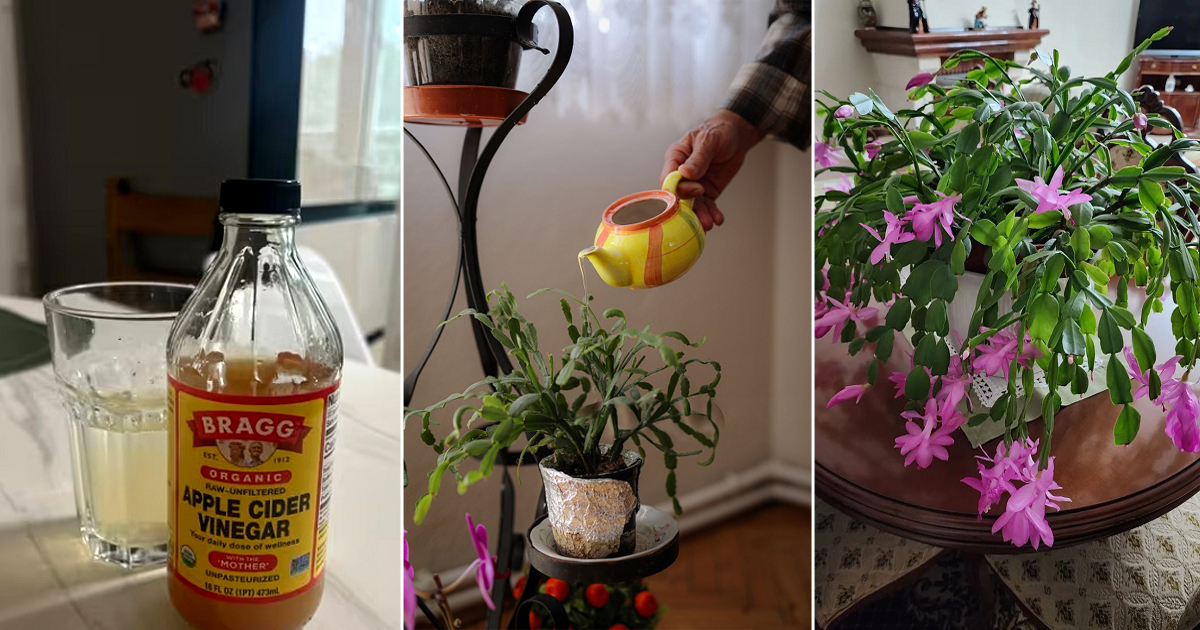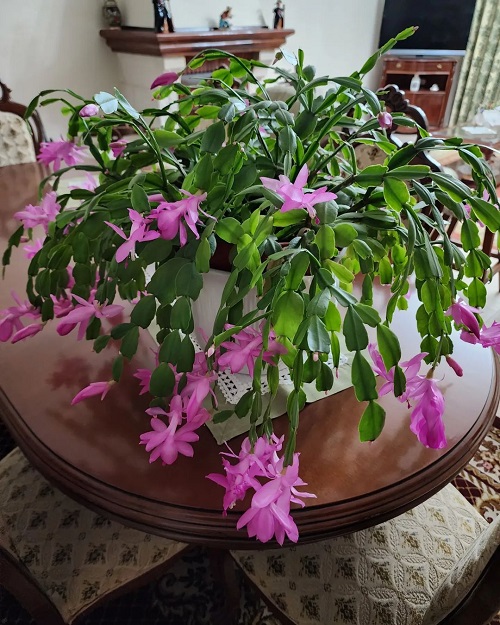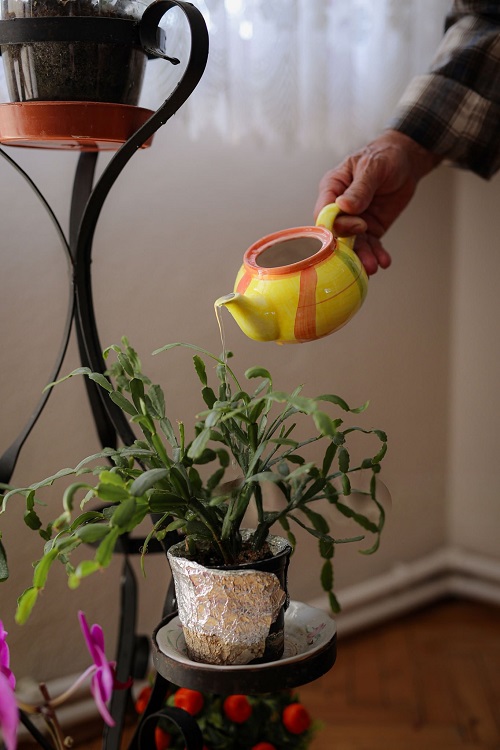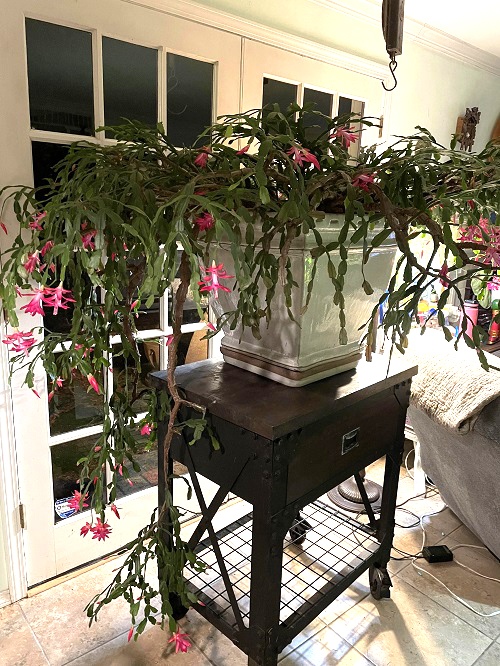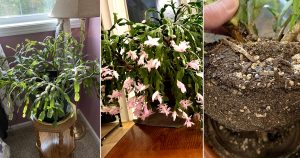Find out Can Apple Cider Vinegar Really Help Christmas Cactus Bloom and how to use it safely for healthy flowers.
Christmas cacti are loved for their bright, colorful blooms that appear right around the holiday season. But sometimes, these plants refuse to flower, leaving gardeners wondering what went wrong. Recently, many plant lovers have been curious about one unusual solution: apple cider vinegar. Could this kitchen ingredient really help your Christmas cactus bloom? Let’s look at the facts.
Why Christmas Cactus Sometimes Won’t Bloom
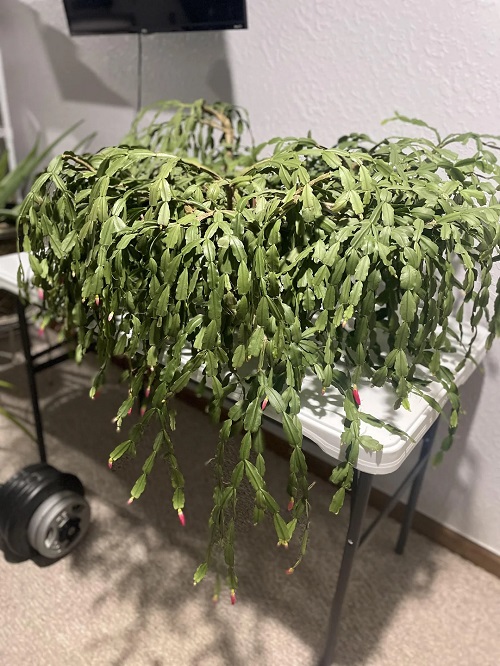
Christmas cacti can be a little picky about their blooming conditions. One of the main reasons they fail to flower is lighting. In their natural environment, they respond to short days and long nights. If they are exposed to artificial light late in the evening, it can disturb their natural rhythm and prevent buds from forming.
Temperature also plays a big role. These cacti bloom best when they experience cool nights. If your home stays too warm in the evenings, the plant may not get the signal that it is time to produce flowers.
Watering habits can add to the problem. Too much water causes root stress and encourages rot, while too little water leaves the plant too weak to produce blooms. Finally, nutrient deficiencies may keep the plant healthy-looking but not productive. Without the right balance of minerals, a Christmas cactus may grow new leaves but stop short of flowering.
How Apple Cider Vinegar Works in Soil
Apple cider vinegar is naturally acidic, and when diluted in water, it can slightly lower the pH of soil. This is important because many houseplants, including Christmas cactus, prefer soil that is closer to neutral or mildly acidic. In alkaline soil, nutrients such as iron and magnesium become harder for roots to absorb. When the pH is adjusted with a small amount of vinegar, these nutrients become more available to the plant.
Besides balancing soil pH, apple cider vinegar contains trace elements like potassium and even small amounts of iron. While these are not in large enough quantities to replace a regular fertilizer, they may contribute to overall plant health. In this way, ACV acts more as a soil conditioner than a direct food source for the cactus.
Can ACV Really Trigger Blooms?
The truth is that apple cider vinegar does not directly trigger blooming. There is no scientific evidence to suggest that it works as a flowering hormone or bloom stimulant. However, it may play an indirect role by improving the conditions in which the plant grows. A cactus that is thriving in slightly acidic, nutrient-rich soil will have stronger roots, greener foliage, and better resilience against stress.
When a Christmas cactus is healthy and growing in the right conditions, it is far more likely to follow its natural blooming cycle in the cooler, darker months of the year. In this sense, ACV can be seen as a supportive tool rather than a miracle cure.
How to Use Apple Cider Vinegar for Christmas Cactus
For those who want to experiment with apple cider vinegar, the key is moderation. It should always be diluted before use, as full-strength vinegar is too strong and can harm plant roots. A safe mixture is one teaspoon of apple cider vinegar in one liter of water. This solution can be used to water the plant once a month during the active growing season of spring and summer.
It is important not to overdo it. Using vinegar too often can make the soil overly acidic, which can damage the root system instead of helping it. Another important point is timing. Apple cider vinegar should not be used when the cactus is forming buds or in full bloom, as any sudden changes in soil conditions may cause buds to drop prematurely. Checking the soil type also matters. If your potting mix is already acidic, adding vinegar is unnecessary and potentially harmful.
Other Tips to Make Your Christmas Cactus Bloom
Apple cider vinegar can help improve soil balance, but it is only one part of the equation. To truly encourage your Christmas cactus to bloom, you need to mimic its natural environment. Giving the plant long, uninterrupted nights of darkness in the fall is one of the most important steps. About six weeks of 12 to 14 hours of darkness each night will help trigger bud formation.
Cooler temperatures are equally important. Placing the cactus in a room where nighttime temperatures drop to around 55–65°F (13–18°C) signals the plant that it is time to flower. Watering should also be adjusted during this period. Reducing the amount of water in the fall and then increasing slightly once buds appear helps the plant focus its energy on producing blooms.
Finally, feeding your cactus with a balanced houseplant fertilizer during the growing months of spring and summer prepares it for the blooming season ahead. This ensures that it has enough stored nutrients to produce vibrant flowers when winter comes.

